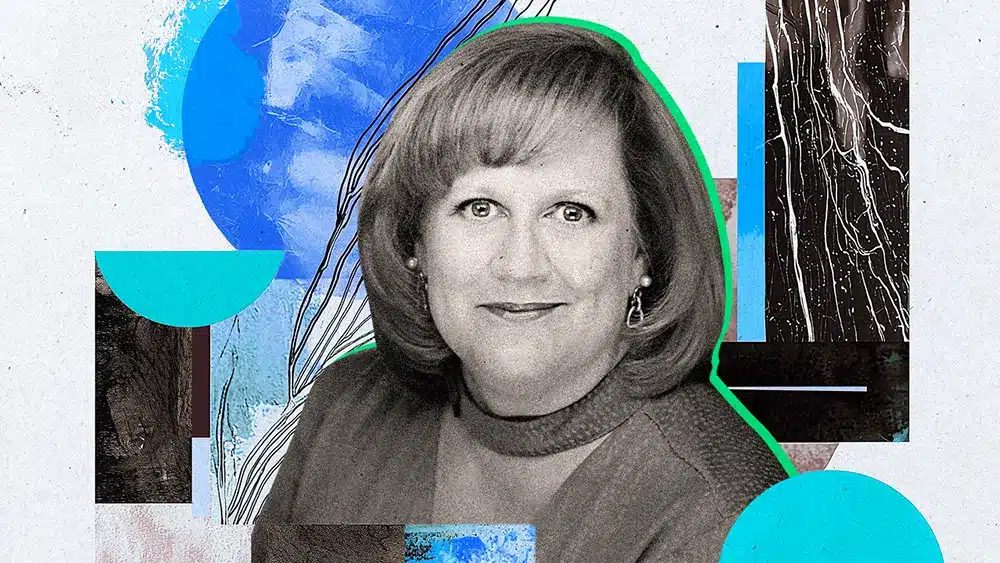
Credit: Outlever

Where I see most organizations failing is truly only leveraging technology and outsourcing as a cost saving. They rarely look at it as a way to enable a higher level of service or as a human enabler; it’s purely ‘how can I reduce the headcount?’.
Michelle Norcross
Sr. Manager in Transaction Dispute Intake
Fifth Third Bank
Customer service often wears the thankless badge of 'cost center'—a reactive "fix-it squad" for when operations inevitably stumble. But this narrow view blinds businesses to its profound power: the ability to not just solve problems, but to proactively defuse them and forge loyalty through genuine human connection. Unlocking this potential transforms service from a simple clean-up operation into a strategic engine of insight and enduring customer relationships.
Michelle Norcross is a seasoned customer experience executive who has driven strategy at companies like Avon and Luxottica, and now applies her cross-industry expertise as Senior Manager in Transaction Dispute Intake at Fifth Third Bank. Her application of CS fundamentals rests on a core principle: "People are people," regardless of the industry.
Making the brand: "The mechanics of the customer service function in any company are unique to that company," Norcross explains. "That's table stakes. But what makes or breaks a brand is how you engage with the customer when you have failed somewhere upstream on that brand promise." She recalls a CEO who championed the book The Best Service is No Service, a premise she initially found counterintuitive.
"My objective was to find out why people are calling and how to eliminate that need. People don't want to call you; they just want the product or service to work. When they do call, 99% of the time it's because something has gone wrong, and we've introduced friction into the relationship." For Norcross, customer service then becomes about "engaging with that customer in a way that makes them feel valued, recovers them back to the brand, and reinforces that the business is good to its word."
Beyond a cost center: Her philosophy directly challenges the view of customer service as merely a cost center, positioning it instead as a vital source of business intelligence. Norcross shares a compelling example from her experience leading a customer support transformation, where the team was initially fielding nearly one inbound contact for every order shipped—a clear signal of friction in the customer journey. By leveraging speech-to-text analytics, they were able to uncover key drivers behind the volume. "We could suddenly see patterns—like contact spikes tied to specific campaigns or product issues," she explains.
"In one case, we identified a significant increase in reports of damaged goods, which led us to a packaging flaw. That insight allowed us to work cross-functionally and implement a fix within a week." Over the next three years, that kind of data-informed responsiveness helped reduce inbound volume by two-thirds, demonstrating a strong return on investment. Even as a cost center, the support function was delivering measurable efficiency and improved customer satisfaction.

The mechanics of the customer service function in any company are unique to that company. That’s table stakes. But what makes or breaks a brand is how you engage with the customer when you have failed somewhere upstream on that brand promise.
Michelle Norcross
Sr. Manager in Transaction Dispute Intake
Fifth Third Bank
The AI Tightrope: That success in transforming data into actionable insight paves the way for how Norcross views today's AI revolution. She advocates for a human-first strategy, warning against the common pitfall of chasing cost savings at the expense of service quality. "Where I see most organizations failing is truly only leveraging technology and outsourcing as a cost saving. They rarely look at it as a way to enable a higher level of service or as a human enabler; it's purely 'how can I reduce the headcount?'." She favors a phased approach. "Within customer service, I think we would do ourselves a huge benefit to first leverage AI to support the human agent. Imagine if an agent could just ask AI the answer from the internal knowledge base instead of toggling and searching through a 22-page document while a customer waits." Implementing AI this way not only makes agents more efficient and improves CSAT but also provides valuable data.
But Norcross also points to hurdles to widespread, effective AI adoption. "I think it's budget first and foremost," she states, followed closely by "the maturity and core competency of the organizations, the people." AI's fast-paced development outpaces the availability of skilled personnel, and companies often underestimate the resources needed to manage new technologies. "How do I integrate AI with a telephony infrastructure that was end-of-life in 2022?" she posits, highlighting a common challenge. Despite these obstacles, she remains optimistic about AI's long-term impact.
Up-leveling support at large: Looking ahead, Norcross believes AI will ultimately lead to better support, but it will demand more from the human workforce. "It's going to require a significant upgrade in skill level of the contact center workforce because as it evolves, the questions that come to a human being are more and more complex." It's not a new trend; she points out how CS roles have grown more demanding over time, from basic message-taking for products like the Ginsu knife in her early career to today's complex problem-solving.
"If you're working on the phones in a true customer service department, you have to be able to think critically. You have to have good problem-solving skills. You have to have much better computer skills than you did back in the day. So there will be a population that sort of gets left behind and has to find another path. But overall, I think we land in a better place from a service perspective."